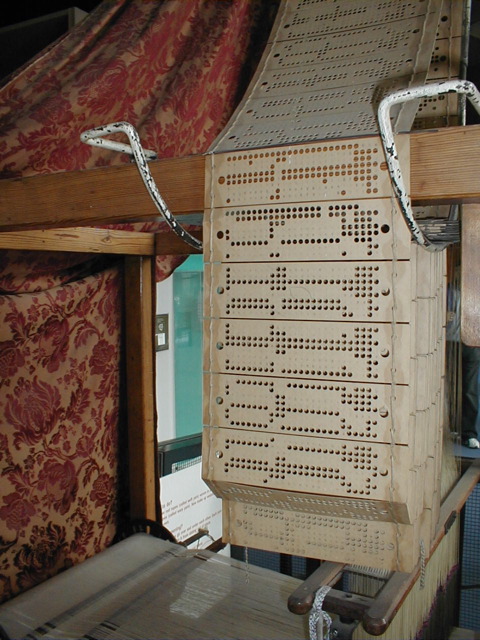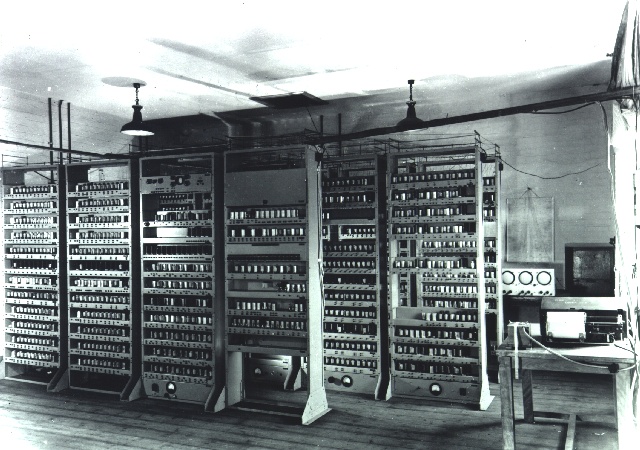Introduction to Hardware
Hardware, what is it?
Hardware is the actual, physical components of the system. The things you can see and touch.
Regardless of if the components are new or old, electronic or mechanical, simple or complex, it’s all hardware.
Humans have been computing for a long time
- But most of it is specific purpose (as opposed to special purpose)

Stonehenge

Antikythera Mechanism

Abacus

Slide Rule

Jacquard Loom

Jacquard Loom

Jacquard Loom
Labor saving?
“Labor Saving” devices, like the Jacquard loom, are often the cause of some social upheaval.
The Luddite movement was in response to mechanization of mills. ## Brief aside on the Luddites
I mention this because it often comes up in computing (we’re seeing this now with generative AI)
Thomis Malcolm argues that the Luddites didn’t hate technology per se, but rankled at their highly-paid, skilled work being replaced with low-paid, unskilled work. The Luddites
The Luddite Falacy is used by economists to refer to the idea that technological unemployment leads to structural unemployment. This seems to not be true (both empirically and theoretically), though it’s unclear if the benefits are distributed evenly…
Babbage and his Engines
Charles Babbage began the incipient stage of modern computing when he worked on designs to automate calculations for navagation and astronomy.
Though his machines were never built during his lifetime, modern recreations show that they work!

Difference Engine
Ada Lovelace
Babbage encouraged a young Augusta Ada Byron (daughter of Lord Byron), to study mathematics.
She went on to write at length on how one may operate the as-of unbuilt analytical engine to solve problems in science and mathematics.
She is often called “history’s first computer programmer”
Ada even speculated that computers could be built to do non-numeric tasks like composing music!
- The analytical engine was never built… but had many planned features that we now find common in modern computers: a central processor, parallel processing, memory, Input/Output, and programmable (by punchcards no less!)

Analytical Engine Part
Herman Hollerith and the Census
- In the late 1880s, Herman Hollerith worked with the US Census Bureau, producing “automatic counting machines.

Hollerith Machine
Hollerith was inspired by the Jacquard loom, borrowing the idea of using punchcards to encode information.
Can anyone guess what became of Hollerith’s company?
But today’s computers aren’t mechanical, they’re electronic!
- Enter the Electronic Numerical Integrator and Computer (U. Penn, 1940s)

ENIAC
It could reach speeds of up to 5,000 calculations per second!
Was meant for war, but it arrived to late…
The ENIAC was “programmed” in a way we’d find perculiar…
The EDSAC (Electronic Delay Storage Automatic Calculator) came soon after in Cambridge

- Early Electronic components are alien to us today


What is a Computer?
We’re going to look at computers from to main perspectives, it’s constitution, what the pieces do, how they’re interconnected… but also what it looks like and how it’s built.
Your computers
- Name each of your computers, describe them, how different are they? How similar?
…
- Smart watches, ebook readers, phones, gps, tablets…
Of cars and computers…
- Who drives cars?
- Much like computers, lots of features of the car have changed… not much of what it does or the basic parts…
What about your computer?
- Who ownes a PC (Windows)
- What about a Mac?
- Cromebook (or other)? …
- Why did you choose that computer? Is it better than the others? …
- What about phones? Same questions.
Logical Construction
Let’s draw an “abstract” view of a computer (PC or similar).
How would this be different than a tablet?
…
- The processor is often called the CPU, a computer’s main memory is also called RAM (random access memory), and the storage is sometimes called the disk or drive.